JAVA ONLY please mark names of the java files thanks public
JAVA ONLY
please mark names of the java files
thanks
public class LinkedList3<T>
{
private class Node<T>
{
private T data;
private Node<T> link;
public Node( )
{
data = null;
link = null;
}
public Node(T newData, Node<T> linkValue)
{
data = newData;
link = linkValue;
}
}//End of Node<T> inner class
private Node<T> head;
public LinkedList3( )
{
head = null;
}
/**
Adds a node at the start of the list with the specified data.
The added node will be the first node in the list.
*/
public void addToStart(T itemData)
{
head = new Node<T>(itemData, head);
}
/**
Removes the head node and returns true if the list contains at least
one node. Returns false if the list is empty.
*/
public boolean deleteHeadNode( )
{
if (head != null)
{
head = head.link;
return true;
}
else
return false;
}
/**
Returns the number of nodes in the list.
*/
public int size( )
{
int count = 0;
Node<T> position = head;
while (position != null)
{
count++;
position = position.link;
}
return count;
}
public boolean contains(T item)
{
return (find(item) != null);
}
/**
Finds the first node containing the target item, and returns a
reference to that node. If target is not in the list, null is returned.
*/
private Node<T> find(T target)
{
Node<T> position = head;
T itemAtPosition;
while (position != null)
{
itemAtPosition = position.data;
if (itemAtPosition.equals(target))
return position;
position = position.link;
}
return null; //target was not found
}
/**
Finds the first node containing the target and returns a reference
to the data in that node. If target is not in the list, null is returned.
*/
public T findData(T target)
{
return find(target).data;
}
public void outputList( )
{
Node<T> position = head;
while (position != null)
{
System.out.println(position.data);
position = position.link;
}
}
public boolean isEmpty( )
{
return (head == null);
}
public void clear( )
{
head = null;
}
/*
For two lists to be equal they must contain the same data items in
the same order. The equals method of T is used to compare data items.
*/
public boolean equals(Object otherObject)
{
if (otherObject == null)
return false;
else if (getClass( ) != otherObject.getClass( ))
return false;
else
{
LinkedList3<T> otherList = (LinkedList3<T>)otherObject;
if (size( ) != otherList.size( ))
return false;
Node<T> position = head;
Node<T> otherPosition = otherList.head;
while (position != null)
{
if (!(position.data.equals(otherPosition.data)))
return false;
position = position.link;
otherPosition = otherPosition.link;
}
return true; //no mismatch was not found
}
}
}
IN JAVA Take the code (it is from the Savitch student data files) listed here and 1) make it doubly linked. 2) Add a copy constructor 3) Add a clone method 4) Replace outputList with toString 5) Code an iterator method 6) Keep track of the tail and add a method outputBackwards to prove the list is doubly linked. Or use the itch code in the book for a doubly linked list and a the functionality mentioned above think you will learn less that way but it is less work. To make the node doubly linked change private Node link, to private Node T> next; private Node T> prev; Test all functionality by hard coding test cases into your demo fileSolution
class LinkedList3<T> implements Cloneable{
private class Node<T> {
private T data;
private Node<T> next;
private Node<T> prev;
public Node() {
data = null;
next = null;
prev = null;
}
public Node(T newData, Node<T> nextValue, Node<T> prevValue) {
data = newData;
next = nextValue;
prev = prevValue;
}
}// End of Node<T> inner class
private Node<T> head;
private Node<T> tail;// for doubly linked list we need tail Node
public LinkedList3() {
head = null;
}
/**
* Adds a node at the start of the list with the specified data. The added
* node will be the first node in the list.
*/
public void addToStart(T itemData) {
// head = new Node<T>(itemData, head);
Node tmp = new Node(itemData, head, null);
if (head != null) {
head.prev = tmp;
}
head = tmp;
if (tail == null) {
tail = tmp;
}
}
/**
* Removes the head node and returns true if the list contains at least one
* node. Returns false if the list is empty.
*/
public boolean deleteHeadNode() {
if (head != null) {
head = head.next;
head.prev = null;// making previous link as null
return true;
} else
return false;
}
/**
* Returns the number of nodes in the list.
*/
public int size() {
int count = 0;
Node<T> position = head;
while (position != null) {
count++;
position = position.next;
}
return count;
}
public boolean contains(T item) {
return (find(item) != null);
}
/**
* Finds the first node containing the target item, and returns a reference
* to that node. If target is not in the list, null is returned.
*/
private Node<T> find(T target) {
Node<T> position = head;
T itemAtPosition;
while (position != null) {
itemAtPosition = position.data;
if (itemAtPosition.equals(target))
return position;
position = position.next;
}
return null; // target was not found
}
/**
* Finds the first node containing the target and returns a reference to the
* data in that node. If target is not in the list, null is returned.
*/
public T findData(T target) {
return find(target).data;
}
public void outputList() {
Node<T> position = head;
while (position != null) {
System.out.println(position.data);
position = position.next;
}
}
public String toString() {
StringBuilder s = new StringBuilder();
Node<T> position = head;
while (position != null) {
s.append(position.data + \" \");
position = position.next;
}
return s.toString();
}
public boolean isEmpty() {
return (head == null);
}
public void clear() {
head = null;
}
/*
* For two lists to be equal they must contain the same data items in the
* same order. The equals method of T is used to compare data items.
*/
public boolean equals(Object otherObject) {
if (otherObject == null)
return false;
else if (getClass() != otherObject.getClass())
return false;
else {
LinkedList3<T> otherList = (LinkedList3<T>) otherObject;
if (size() != otherList.size())
return false;
Node<T> position = head;
Node<T> otherPosition = otherList.head;
while (position != null) {
if (!(position.data.equals(otherPosition.data)))
return false;
position = position.next;
otherPosition = otherPosition.next;
}
return true; // no mismatch was not found
}
}
/**
* * this method walks forward through the linked list
*/
public void iterateForward() {
System.out.println(\"iterating forward..\");
Node tmp = head;
while (tmp != null) {
System.out.println(tmp.data);
tmp = tmp.next;
}
}
/**
* * this method walks backward through the linked list
*/
public void iterateBackward() {
System.out.println(\"iterating backword..\");
Node tmp = tail;
while (tmp != null) {
System.out.println(tmp.data);
tmp = tmp.prev;
}
}
@Override
protected Object clone() throws CloneNotSupportedException {
// TODO Auto-generated method stub
return super.clone();
}
}
public class DoublyLinkedList {
/**
* @param args
* @throws CloneNotSupportedException
*/
public static void main(String[] args) throws CloneNotSupportedException {
LinkedList3<String> linkedList3= new LinkedList3<>();
linkedList3.addToStart(\"Hello1\");
linkedList3.addToStart(\"Hello2\");
linkedList3.addToStart(\"Hello3\");
linkedList3.addToStart(\"Hello4\");
linkedList3.iterateForward();
linkedList3.iterateBackward();
System.out.println(\"To String method\");
System.out.println(linkedList3.toString());
LinkedList3<String> clonedObj=(LinkedList3<String>) linkedList3.clone();
System.out.println(\"printing cloned object\");
clonedObj.iterateForward();
}
}
------------------output-----------------------
iterating forward..
Hello4
Hello3
Hello2
Hello1
iterating backword..
Hello1
Hello2
Hello3
Hello4
To String method
Hello4 Hello3 Hello2 Hello1
printing cloned object
iterating forward..
Hello4
Hello3
Hello2
Hello1
-----------output ends------------------
Note: Feel free to ask any doubts/queries. God bless you!!
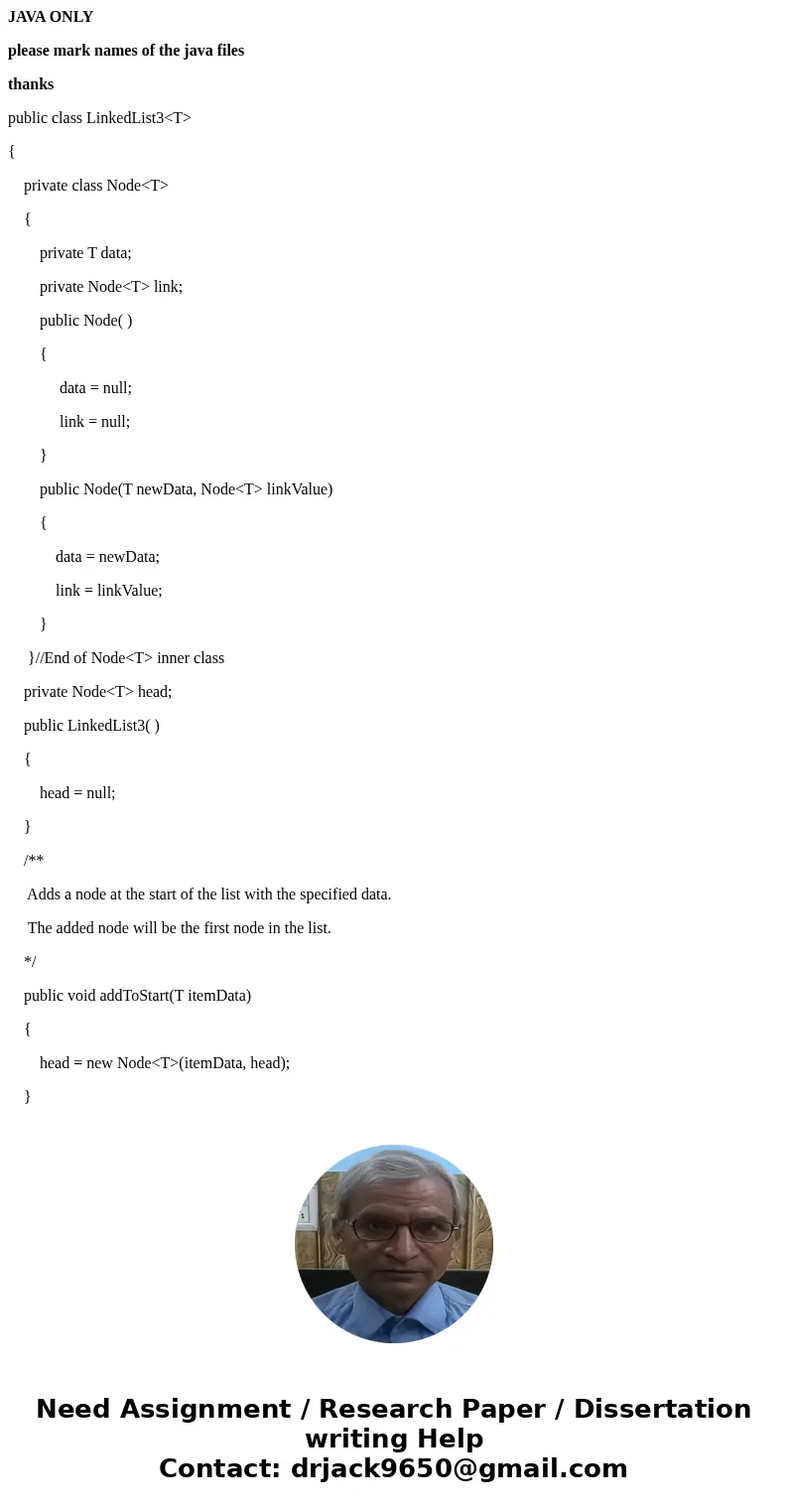
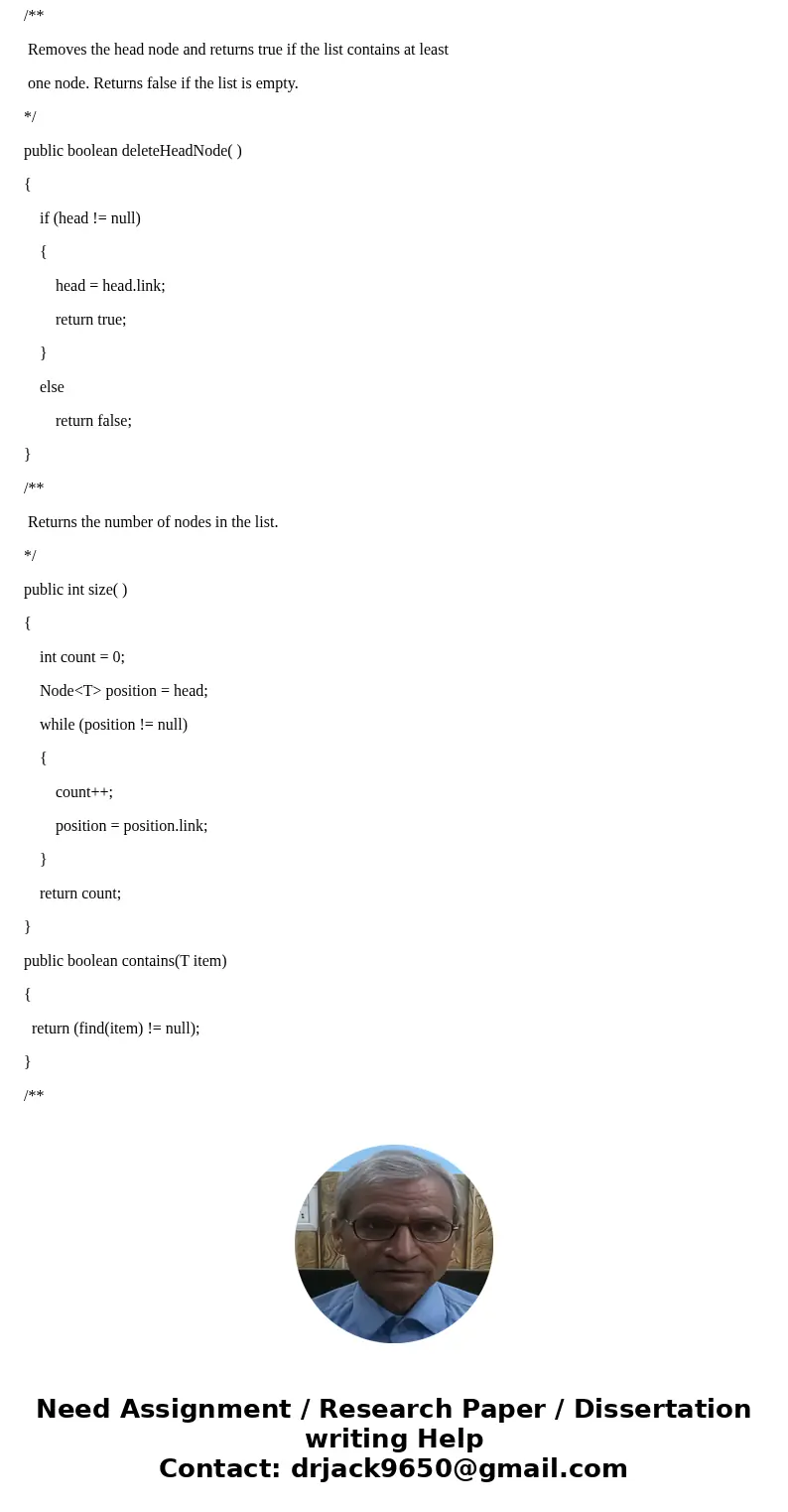
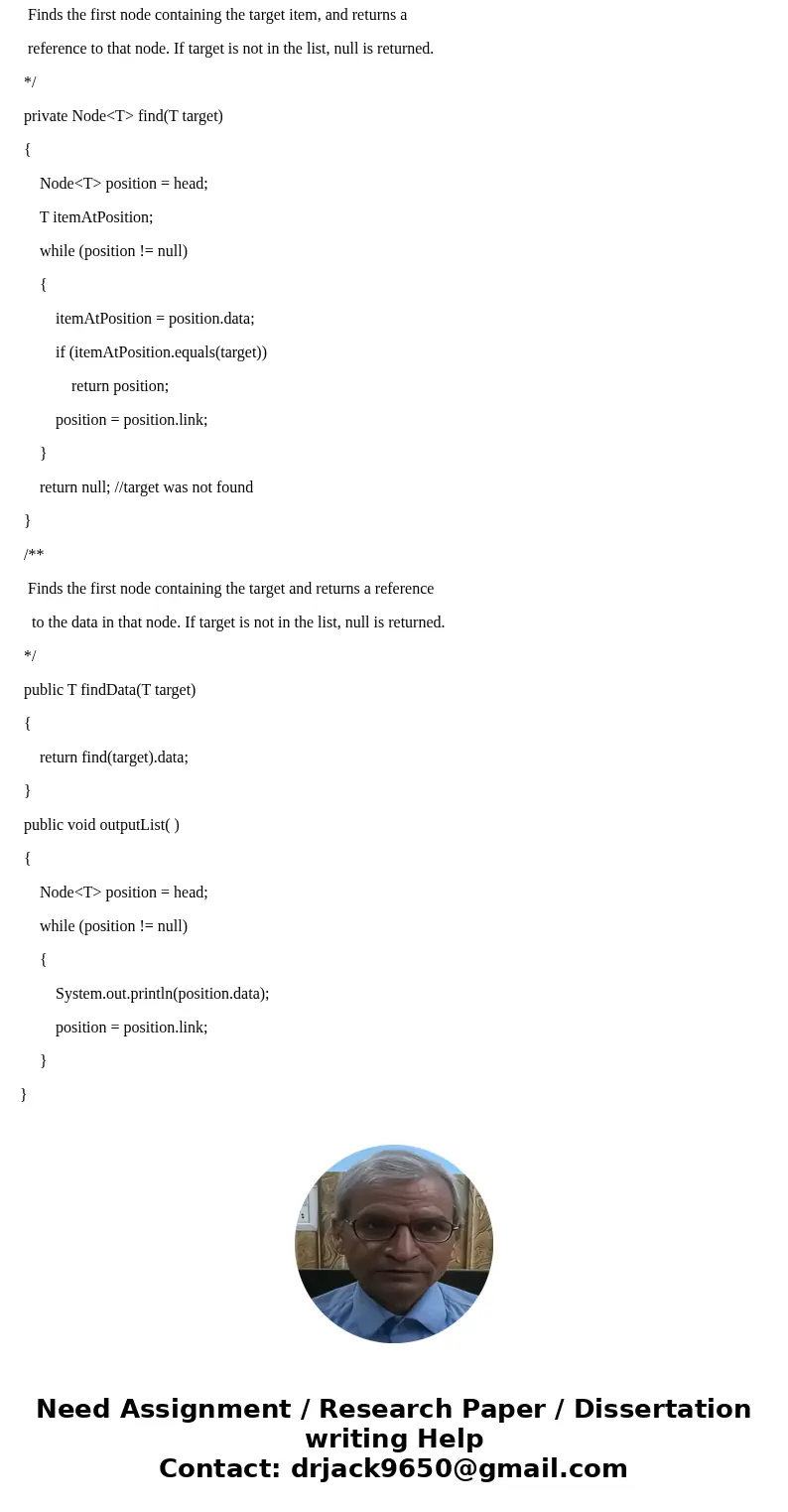
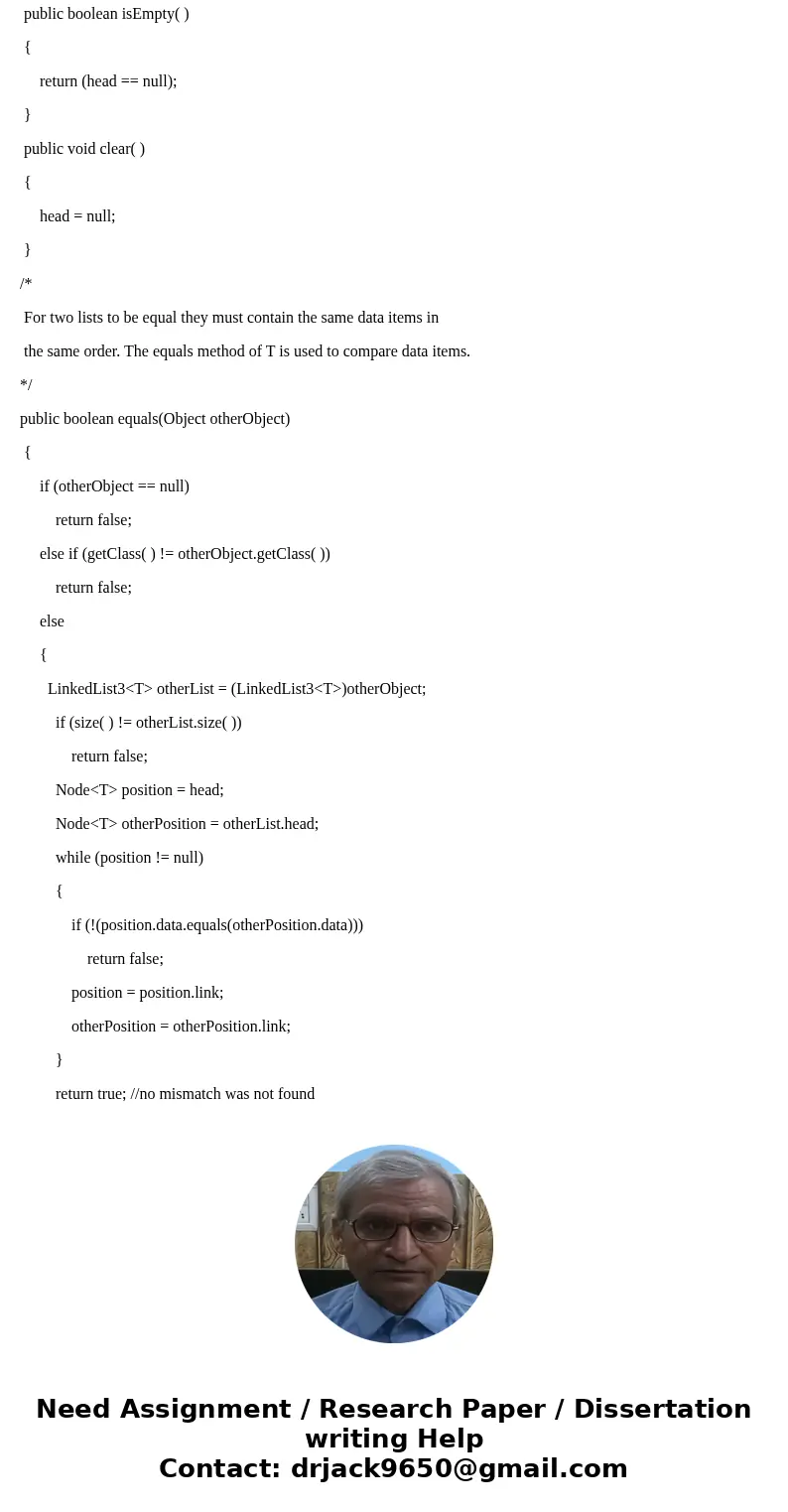
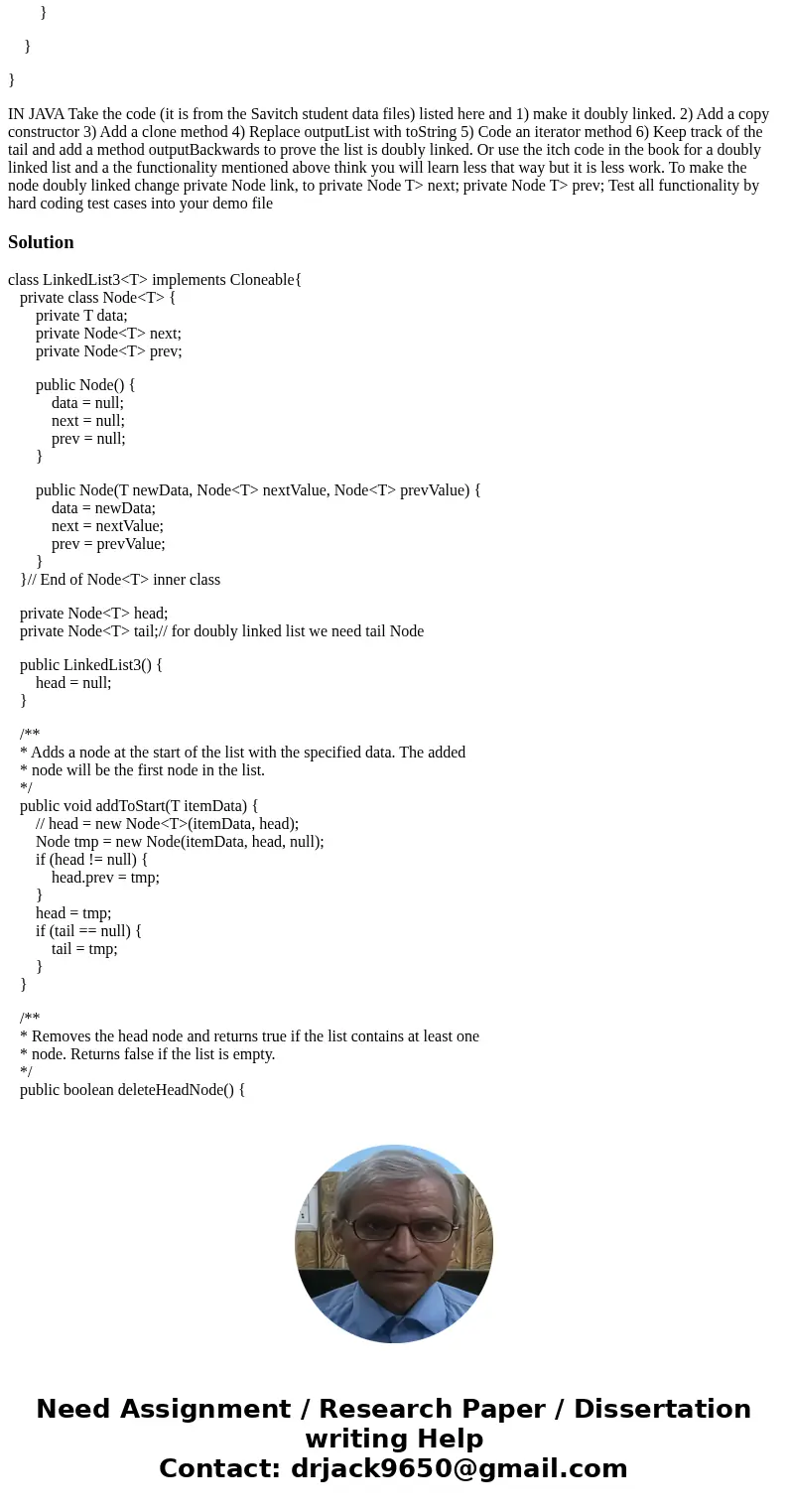
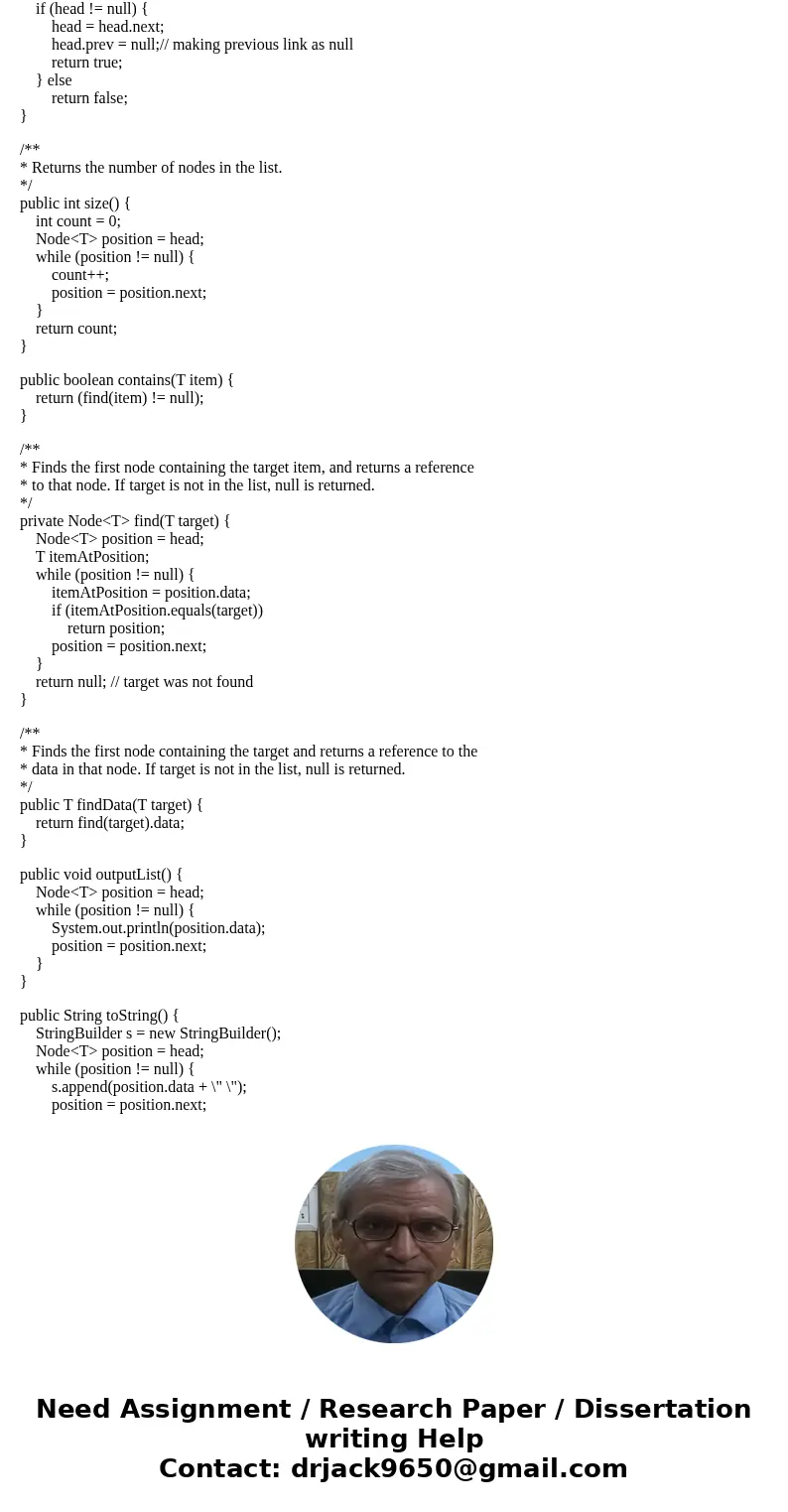
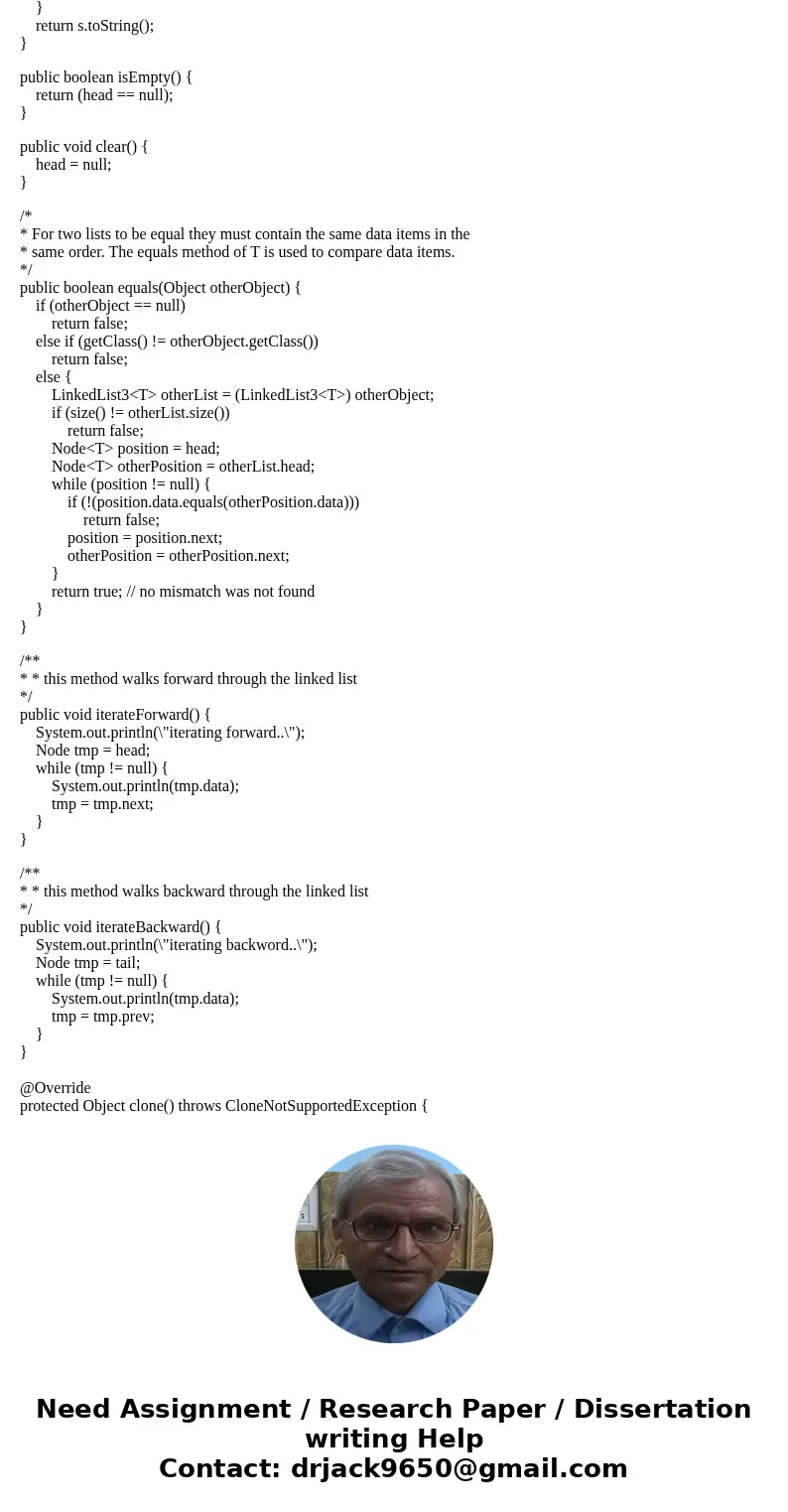
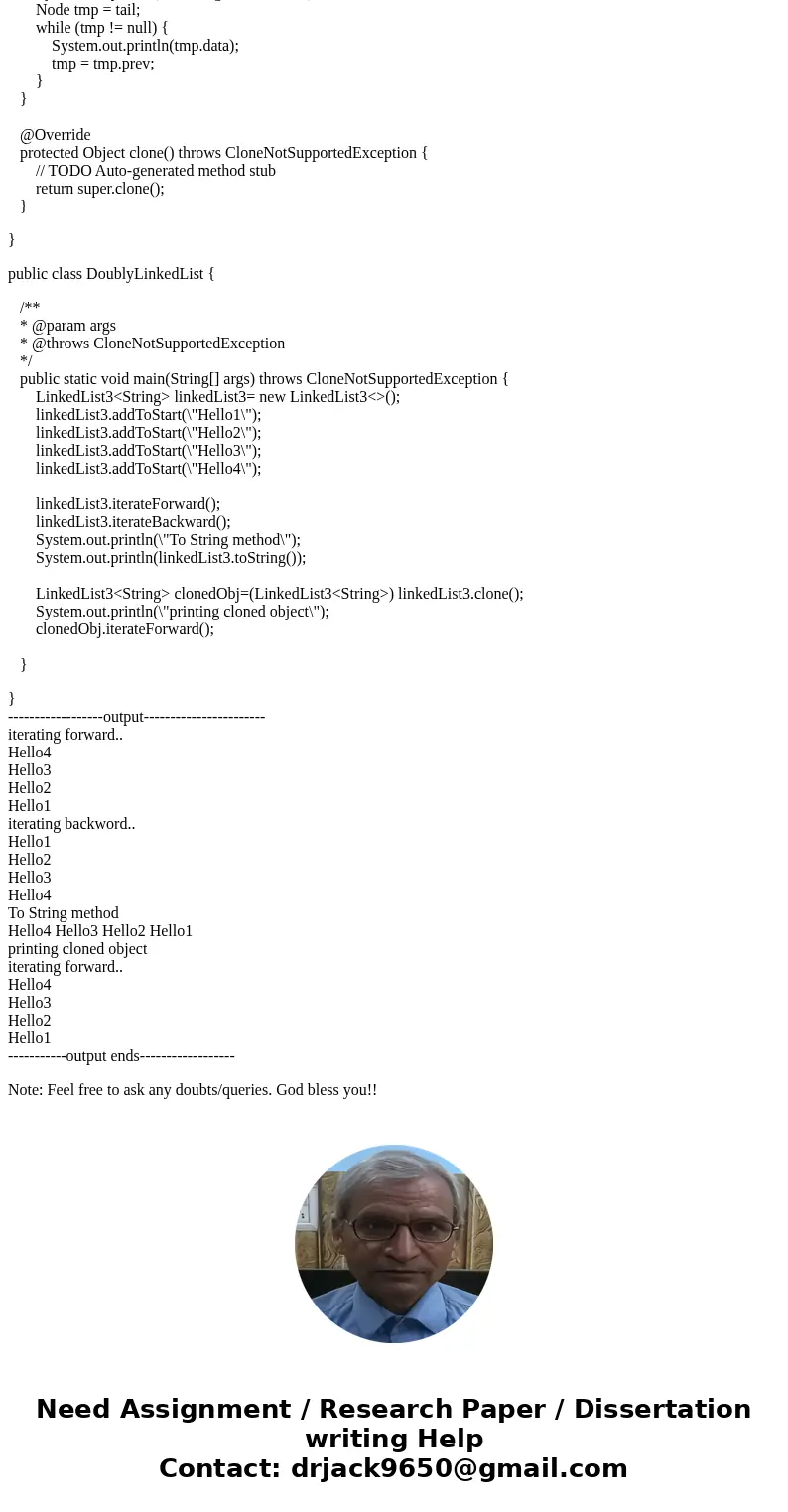
 Homework Sourse
Homework Sourse